On Monday we walked down the flight to Crofton Pumping Station. As it was a Bank Holiday they were in steam. They don’t open until 10 30 am and we arrived about quarter passed so we chatted with some of the volunteers by the entrance. I think they do very well manning for steaming days as they need a minimum of 12 to run safely, let alone run the cafe, BBQ, shop etc. As they let the fire out at night and clean it the next morning before relighting it, they didn’t have full steam up when they first opened and were only just starting the first Beam Engine the oldest one by some 30 years. Until the engine is running smoothly at the correct speed the valves are opened manually in the correct order and timing to start the engine running in what is known as |The Cornish Cycle.
As they let the fire out at night and clean it the next morning before relighting it, they didn’t have full steam up when they first opened and were only just starting the first Beam Engine the oldest one by some 30 years. Until the engine is running smoothly at the correct speed the valves are opened manually in the correct order and timing to start the engine running in what is known as |The Cornish Cycle.
Not only is this building home to this old boiler it is also home to a family of Swallows who have nested up in the rafters right above the boiler. I wouldn’t be surprised if they think twice about emigrating at the end of the summer with a centrally heated nest. 
 Once it is running correctly the valves operate automatically to keep the engine rocking.
Once it is running correctly the valves operate automatically to keep the engine rocking.  It is interesting to see the changes that took place in the development of the engine in those 30 years, lots of things are much lighter, even the beam weighs in at 4 tons less. The other thing of note is that they had moved on from 4 sided square nuts to 6 sided hexangular ones like we use today
It is interesting to see the changes that took place in the development of the engine in those 30 years, lots of things are much lighter, even the beam weighs in at 4 tons less. The other thing of note is that they had moved on from 4 sided square nuts to 6 sided hexangular ones like we use today
All the stationary engines were running when we arrived including a generator from a boat with its own switchgear.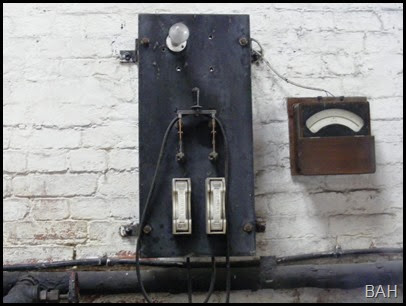 Another engine of note was one where the oscillating cylinder one where the main cylinder rocked back and forth meaning there was no requirement for a joint in the conrod where it joins the piston, this is the same set up that was used on the engine of the SS Great Britain.(the one with a red frame)
Another engine of note was one where the oscillating cylinder one where the main cylinder rocked back and forth meaning there was no requirement for a joint in the conrod where it joins the piston, this is the same set up that was used on the engine of the SS Great Britain.(the one with a red frame)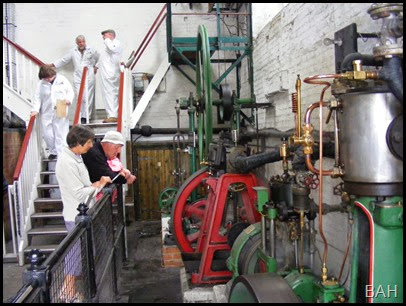 At the top of the stares is an old clock, this was originally installed in the top of a warehouse at Honeystreet . It is said to be built of old agricultural bits and pieces and is slightly temperamental having once chimed 50 but now keeps good time.
At the top of the stares is an old clock, this was originally installed in the top of a warehouse at Honeystreet . It is said to be built of old agricultural bits and pieces and is slightly temperamental having once chimed 50 but now keeps good time.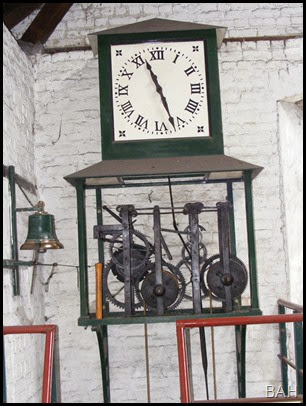 A visit to the pump house takes you to all parts of the building including the cylinder head floor which houses
A visit to the pump house takes you to all parts of the building including the cylinder head floor which houses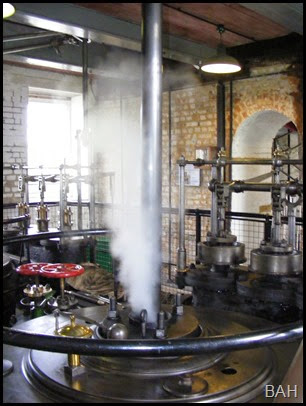 the top of the cylinders and the valve chests which are operated by the valve gear on the floor below.
the top of the cylinders and the valve chests which are operated by the valve gear on the floor below.
There is also a set of old tools which were made specifically for this engine.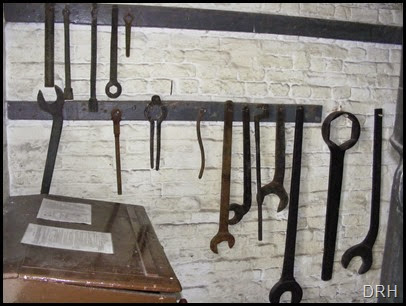
Each beam lifts a 5 stage pump from the well below the pump house, although they are both the same size they are of different construction, No.1 is a Bolton and Watt and is a straight lift pump where as No.2 is a Harvey pressure pump using a 6.25 ton weight. each stroke discharges a ton of water so it is lifting a column of water weighing 5 tons. The reason for starting the oldest pump first is that the water from it is used to prime the number 2 pump. Both pumps discharge their water out of the back of
each stroke discharges a ton of water so it is lifting a column of water weighing 5 tons. The reason for starting the oldest pump first is that the water from it is used to prime the number 2 pump. Both pumps discharge their water out of the back of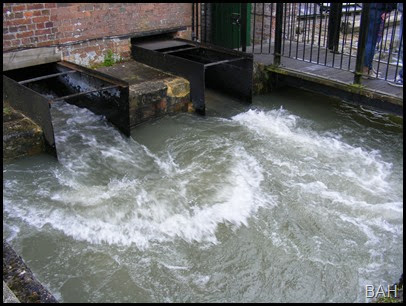 the pump house where it flows over a series of weirs and along a channel to the top of the lock flight
the pump house where it flows over a series of weirs and along a channel to the top of the lock flight 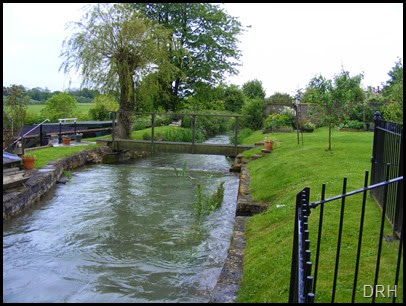 where it discharges back into the canal to keep the summit topped up before the days of the modern electric pumps. The outlet of the channel can be seen on the far side of the canal, quite reedy but still clear enough to allow the water to flow out.
where it discharges back into the canal to keep the summit topped up before the days of the modern electric pumps. The outlet of the channel can be seen on the far side of the canal, quite reedy but still clear enough to allow the water to flow out.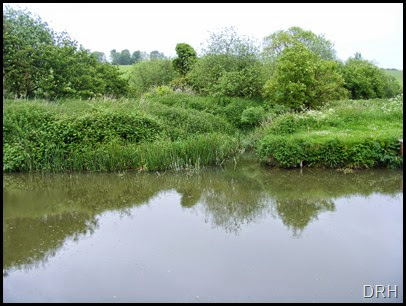
As we walked back to the boat I spotted these metal fence posts in a field, they have built in tensioners to tighten the fence wire and look quite ornate, so different to a modern post which is banged in without even a chamfer to run the water off the end grain.
Even the old field gate is ornate with scowled top iron on the top corners.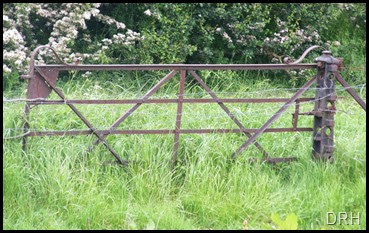
The Crofton Pump house is run by a branch of the Kennet and Avon Trust and there is much more information about the pumps on the Crofton Beam Engine web site
.
No comments:
Post a Comment